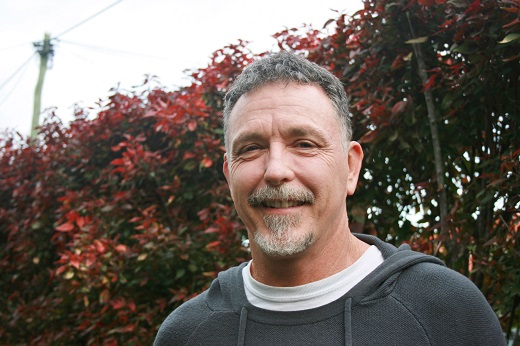|
|
Interview: How to Excel at Ethics
Human rights and the environment must be part of the trade’s conversation so consumers can make informed decisions, says Australian ethical-jewelry champion Benn Harvey-Walker.
Jun 3, 2019 11:16 AM
By Jennifer Heebner
|
|
|

RAPAPORT... Benn Harvey-Walker makes a living as co-founder and director
of business development of Ethical Jewellery Australia, but he’s made a name
for himself as a blogger who espouses the benefits of making the industry more
thoughtful and less harmful to all involved. The bespoke retail jeweler,
advocate, and watchdog in Brisbane, Australia, has earned a reputation as a
voice of authority and reason among proponents of progress.
What needs to change in the industry conversation about
ethics?
Frankly, I’m not convinced the industry takes jewelry ethics
seriously. There was a surge of interest when the movie Blood Diamond came out,
but then most thought that the Kimberley Process put that to bed. We have to
change the conversation, because not only is it what customers want, it’s the
right thing to do. Whether millennials are driving it or not, the wider
industry has a lot of catching up to do with what the marketplace now demands.
And the conversation depends on your customer’s definition of ethics. It’s a
subjective term. For example, some consider mining to be unethical, period.
Others see it as essential for economic development, but not at the expense of
human rights and the environment. What’s critical is to make consumers aware of
the issues so they can decide for themselves what’s important.
What is your definition of ethics?
Jewelry is a non-essential product, so we look at it from a
“greatest good” perspective, which means we tend to put the planet first. The
choices we make about materials are all about minimizing harm, but we don’t
ignore the human element. In the bespoke gemology and jewelry-design business
that Melinda Bailey and I founded in 2007, we use ethically-sourced recycled
gold, platinum and palladium (and fair-trade gold from time to time). We also
only use traceable or recycled and vintage diamonds, fair-trade gemstones, or
responsibly produced lab-created gems.
We focus on minimizing our carbon footprint, but that doesn’t
mean we’re opposed to mining, provided producers are socially and
environmentally responsible. We’re also concerned about climate change, and I
like to think we do our bit. For every piece of jewelry we make, we plant two
trees through a group called the Carbon Neutral Charitable Fund. It’s a new
initiative we started this year, and to date, we’ve planted 78 trees.
There’s a lot of talk about diamonds and ethics, but what
about colored stones? Aren’t strides being made to improve the lives of artisanal
miners of other gems?
Yes, and there are a lot of great people working hard in the
fair-trade space to improve things. Awareness in the market is growing, but we
have a long way to go. It’s still a huge problem affecting millions of people,
especially in developing nations. The ethics of the jewelry they buy is still
not top of mind for most people, and colored gemstones are just one aspect of a
very complicated picture.
For instance, solutions like blockchain are much more
difficult to implement in the colored-gemstone space because the supply chain
is so fragmented. Some 75% of gemstones come from artisanal mining sources,
whereas around 85% of diamonds come from a relatively small number of
large-scale producers.
What do you think the messaging should be surrounding
lab-grown diamonds?
Mine-origin, as a product, has not had any direct
competition until recently. The industry has not had to do a lot to sell
diamonds ever since De Beers’ “A Diamond Is Forever” campaign kicked things off
in the 1940s. But now the Federal Trade Commission is saying that lab-grown
diamonds are essentially the same as mine-origin, so the whole diamond-jewelry
landscape is changing.
There’s no ignoring the fact that lab-grown products are
cheaper, so the mine-origin industry now must work a lot harder to convince the
market to pay a premium for what many perceive to be the same thing — rightly
or wrongly.
The places where much of the world’s precious gems and
metals originate are poor, so how can the industry continue to ethically
provide much-needed mining jobs in those areas?
Tiffany & Co. is setting a great example. According to
published reports, it recently increased — by hundreds — the number of people
it employs for cutting and polishing in areas adjacent to mine sites in Africa.
Adding value in the country of origin helps with local
economic development, but more could be done to sponsor local infrastructure
development, health and education. This helps locals develop other ways of
generating income to sustain them when the resources run out, which they
inevitably will.
Are fair-trade and Fairmined gems and metals the answer
to the industry’s ethics and sustainability issues?
On balance, yes, but you need to add to that. Adopting those
principles will improve the environmental and social situations in developing
nations, but that’s only part of the big picture.
We haven’t talked at all about human rights issues in the
cutting and polishing industry or jewelry manufacturing, or about habitat
destruction or carbon-offsetting, or about the porosity of supply chains that
facilitate illegal activity. Traceability and fair-trade principles, directly
and indirectly, address a lot of these issues, but not all of them. A good
starting point is to find suppliers with personal values that match your own —
whether in relation to human rights, the environment, or elsewhere.
This article was first published in the June issue of Rapaport Magazine.
Image: Benn Harvey-Walker. (Benn Harvey-Walker)
|
|
|
|
|
|
|
|
|
|
Tags:
Australia, Benn Harvey-Walker, environment, ethics, human rights, Jennifer Heebner, Rapaport News
|
|
|
|
|
|
|
|
|
|
|

|
|